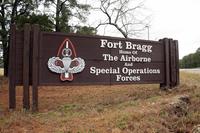A mandatory "operational pause" for all Marine F/A-18 Hornet squadrons in August allowed the units to review procedures in hopes of reversing an increase in ground mishaps, Marine Corps Commandant Gen. Robert Neller told Military.com this month.
The 24-hour stand-down, reported in early August, came after two Marine Corps F/A-18C Hornets crashed within a week of each other.
On July 28, Maj. Richard Norton of Marine Attack Fighter Squadron 232 was killed when his aircraft went down during training near Marine Corps Air Ground Combat Center Twentynine Palms, California. Days later on Aug. 2, a Navy pilot was injured after ejecting from a Hornet from the same squadron that had been on loan to Naval Air Station Fallon, Nevada's Strike Fighter Wing Pacific Detachment.
That squadron also suffered tragedy last October, when Marine Maj. Taj Sareen went down with his Hornet near Royal Air Force Airfield Lakenheath in England while returning to the U.S. after a six-month deployment to the Middle East.
But in a brief interview Sept. 15, Neller said the operational pause was focused on lower-level Class C mishaps -- those nonfatal accidents causing between $50,000 and $500,000 worth of damage to aircraft, or injuries that result in lost work hours.
Deputy Commandant for Aviation Lt. Gen. Jon Davis told lawmakers in July that aviation Class C mishaps had nearly doubled over the past year, a phenomenon he struggled to explain.
"Our real focus on the stand-down was Class C things, things that were happening on the ground and were clearly avoidable by folks following [tactics, techniques and procedures] and paying a little more attention to detail and leaders doing a better job of supervising," Neller said. "So I think Gen. Davis' intent was to get after that, and I'm confident he did."
According to a Marine Corps quarterly safety newsletter published in May, the service was already at 32 Class C aviation mishaps for the year then, compared to 55 Class C mishaps for the entire previous year. Those 32 mishaps cost the service more than $1.8 million and resulted in almost four years in cumulative lost flight days.
"In the last eighteen months, the Marine Corps lost nearly eleven years of aircraft availability to Class C mishaps!" the newsletter states. "The average aircraft requires fifty-five days of work before its next flight. In more extreme cases, the aircraft is unavailable for fifteen months or more. This translates to 7.2 aircraft that are unavailable every day due to Class C mishaps."
Neller suggested the issue came down to attention to detail and precision on the part of the aircraft maintainers.
"It's hard to bring your A-game every day, but that's what we're asking Marines to do every day, is bring their A-game," he said. "We've got to keep every airplane we have in the best condition we can make it so it can fly, so the air crew can get their hours, and we can go where we have to go."
Despite three Hornet crashes in a year and the horrific collision of CH-53E Super Stallion helicopters in January that killed all 12 Marines aboard the two aircraft, Neller and other Marine officials maintain there is no link between the crashes and readiness shortfalls that have limited pilot flight hours.
"Our accident rate, we never want to have any accidents, but it's pretty consistent," Neller said.
Due to tight budgets, a high operational tempo, and delays in planned modernization, Marine officials are working to claw back from a plunge in aircraft mission-capable rates.
"We're working really hard on aviation, because we've dug ourselves a deep hole," Neller said. "We're digging ourselves out. It's not going to happen overnight. It's going to happen if we get consistent, stable funding of parts and sustainment, and we get new airplanes."
-- Hope Hodge Seck can be reached at hope.seck@military.com. Follow her on Twitter at@HopeSeck.
Related Video:




























